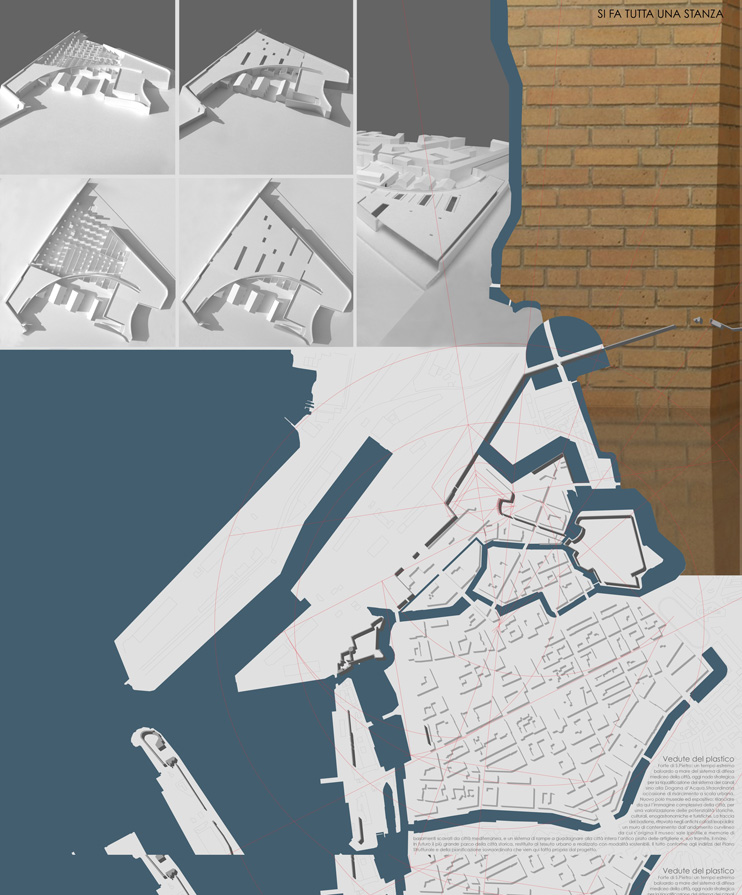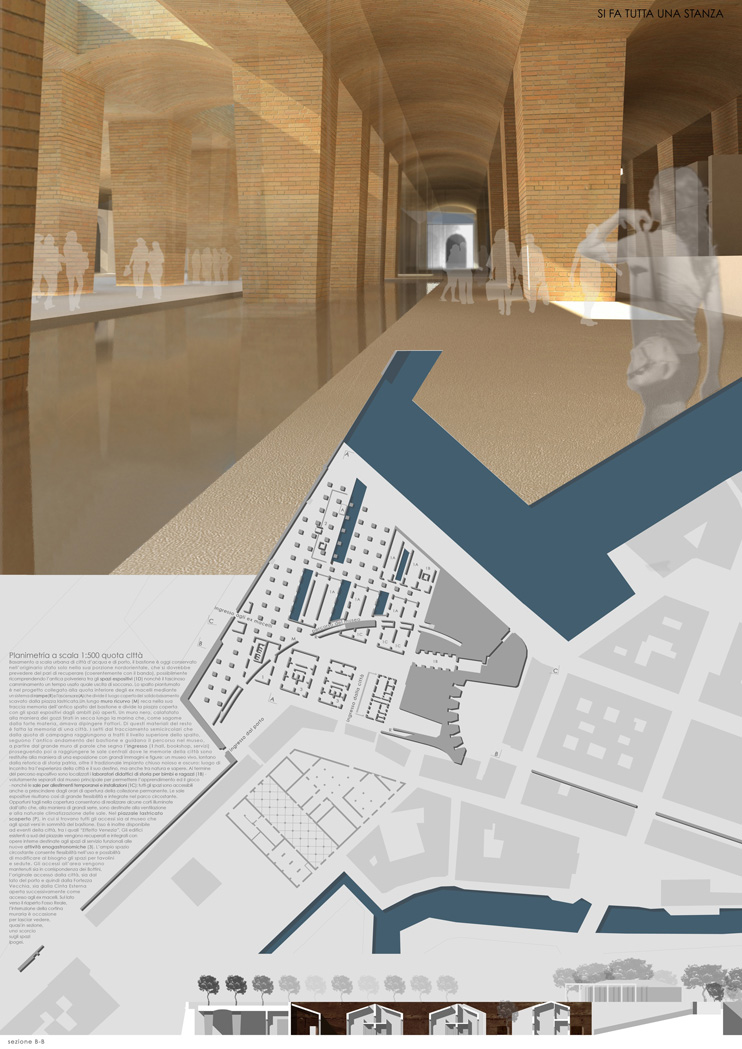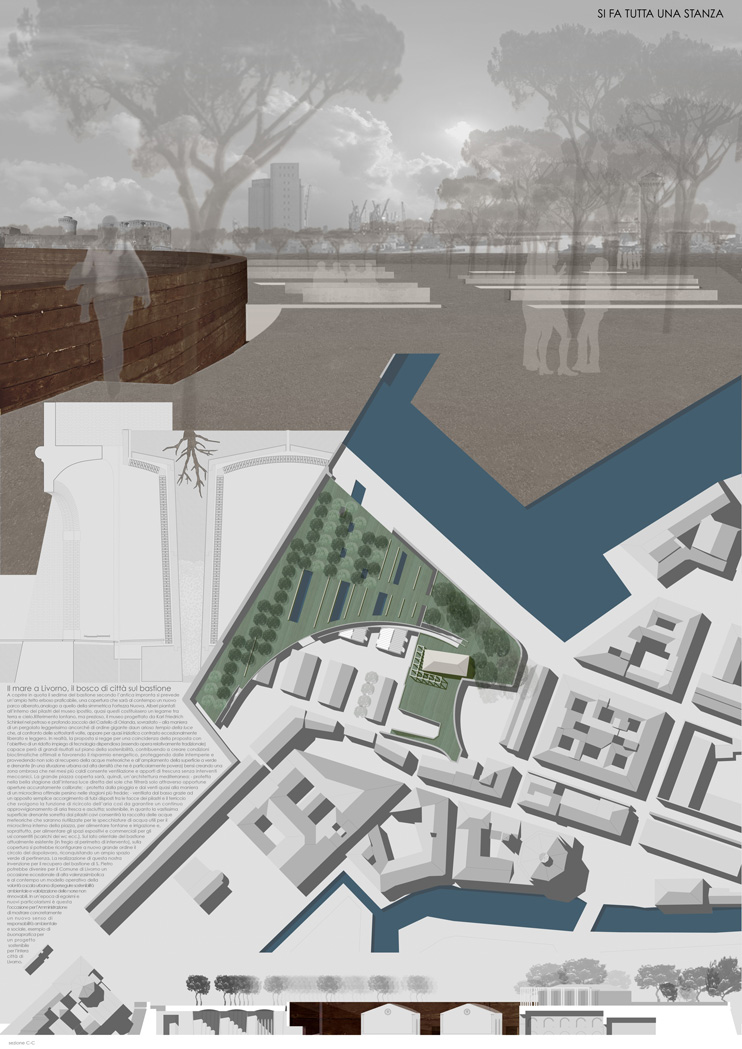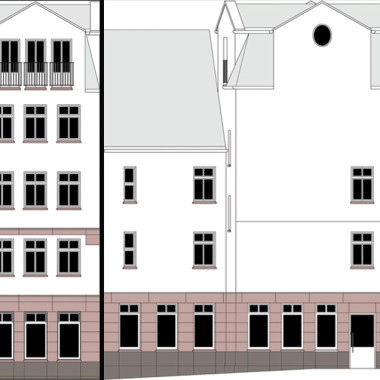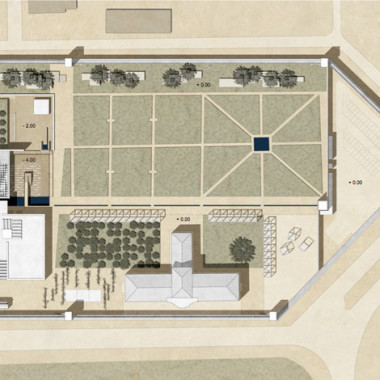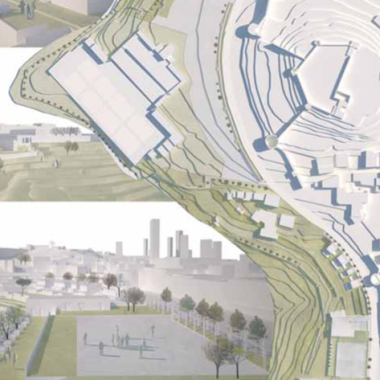-
Riqualificazione del Forte di San Pietro, Livorno
R.Campagnola (capogruppo), M.G.Eccheli con F.Collotti e L.Barontini, A.Bonvini, E.Cecconi, A.Cossu, M.Pivetta, sostenibilità M.Boasso, modelli S.Acciai, C.Argenti
Livorno, 2008Tra le figure di città del Mediterraneo lo spalto del vecchio bastione torna grande pianta ipogea dove anche l’acqua è materiale da costruzione. Come antichi palazzi che abbiam visto a Spalato, Costantinopoli, Salonicco. Quota recuperata al piano della città e del vecchio macello (museo e polo espositivo delle produzioni enogastronomiche e artigianali del territorio). Lavorando su una straordinaria idea di K.F.Schinkel per il Palazzo di Orianda, si arriva poi all’antico spalto con le rampe delle artiglierie: grande prato alberato a scala urbana, tempo più lento legato all’esperienza della città rispetto alla concitazione del porto. I pilastri tengon le radici degli alberi in un complesso sistema di recupero della CO2 e dell’energia necessaria a rendere il tutto confortevole.
-
Redevelopment of San Pietro Fort, Livorno
R.Campagnola (Group Leader), M.G.Eccheli con F.Collotti e L.Barontini, A.Bonvini, E.Cecconi, A.Cossu, M.Pivetta, sostenibilità M.Boasso, modelli S.Acciai, C.Argenti
Livorno, 2008Among the figures of Mediterranean cities, the glacis of the ancient fortress becomes a great underground map, where even water is construction material. Like the ancient buildings we have seen in Split, Constantinople and Thessaloniki. Recuperated depth of the city and the old abattoir (museum and exhibition centre for local wine, food and craft production). Working on an extraordinary idea by K.F.Schinkel for the Orianda Palace, we arrive on the ancient slopes with their artillery ramps: great tree-lined lawns on an urban scale, a sense of tranquility compared to the hustle and bustle of the port. The pillars hold the roots of the trees in a complex system of carbon dioxide and energy recycling necessary to make the whole thing comforting.

